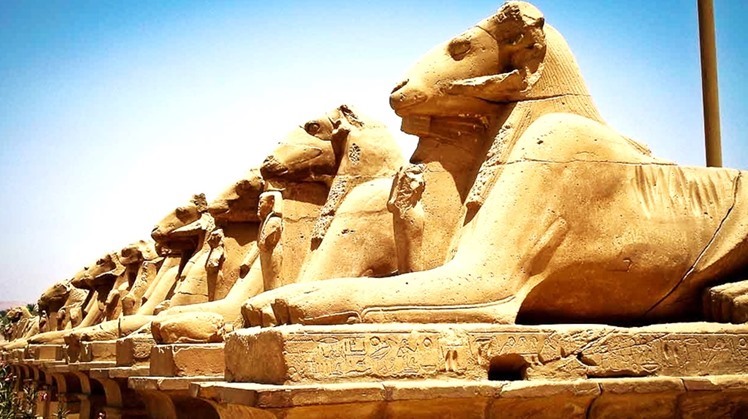The largest international project linking Luxor Temple with Karnak temples at a distance of 2,700 meters, on the path of the celebrations of the Pharaohs’ kings thousands of years ago, is the Pharaonic Rams Road, and at the present time the final touches are being put to the opening of the road through a majestic event that the whole world will talk about, within the framework of the state’s interest after the president took office Abdel Fattah El-Sisi ruled Egypt, given that it is one of the most important national projects in the archaeological and tourism field, in the heart of Luxor, which guarantees tourist groups a tourist trip between the ancient Pharaonic heritage and civilization, starting from the Luxor Temple on the Nile Corniche, to the historic Karnak temples.
The Rams Road is one of the most important ways of Pharaonic life, as it witnessed the celebrations of the Opet feasts during the flood season, during which Amon visited the temple of his wife Mutt in Luxor, which remains for 40 days in the Luxor Temple and travels to Karnak across the Nile with festive processions, and the processions of celebrations also run from and to the Karnak Temple via The road of rams in carnival scenes written on the walls of the Pharaonic temples in the governorate.
Excavations began on the road at the end of the 1940s by the archaeologist Zakaria Ghoneim, followed by Dr. Mohamed Abdel Qader, who discovered the beginning of the road at the Luxor Temple in the fifties, then Dr. Mahmoud Abdel Razek discovered parts of the road at the Luxor Temple during the sixties, and after A pause period, Dr. Muhammad al-Saghir discovered different parts of the road in the middle and at its beginning next to the Karnak Temple during the eighties and nineties until the beginning of the third millennium, followed by Dr. Mansour Brik, who revealed the rest of the road during the period from 2006 AD until 2011 AD until work stopped after the events In January, due to a lack of financial funds, but after President Abdel Fattah El-Sisi assumed the rule of Egypt, work was resumed again in 2017 to reveal the rest of the road in preparation for its opening for a visit, and indeed, a percentage of more than 98% was completed.
 Wed, Sep. 8, 2021
Wed, Sep. 8, 2021